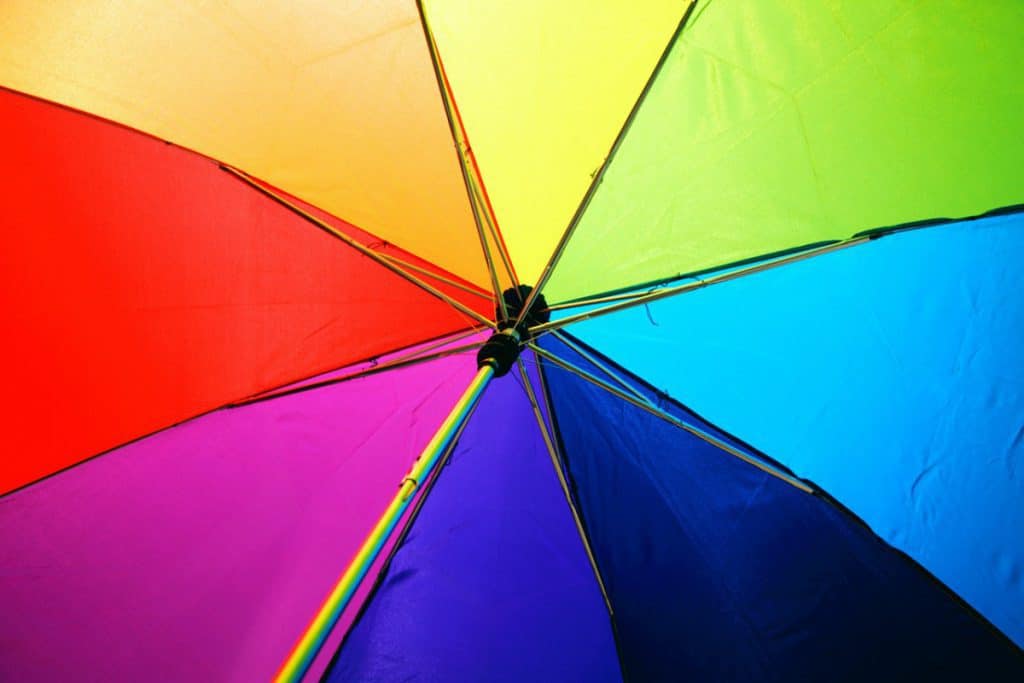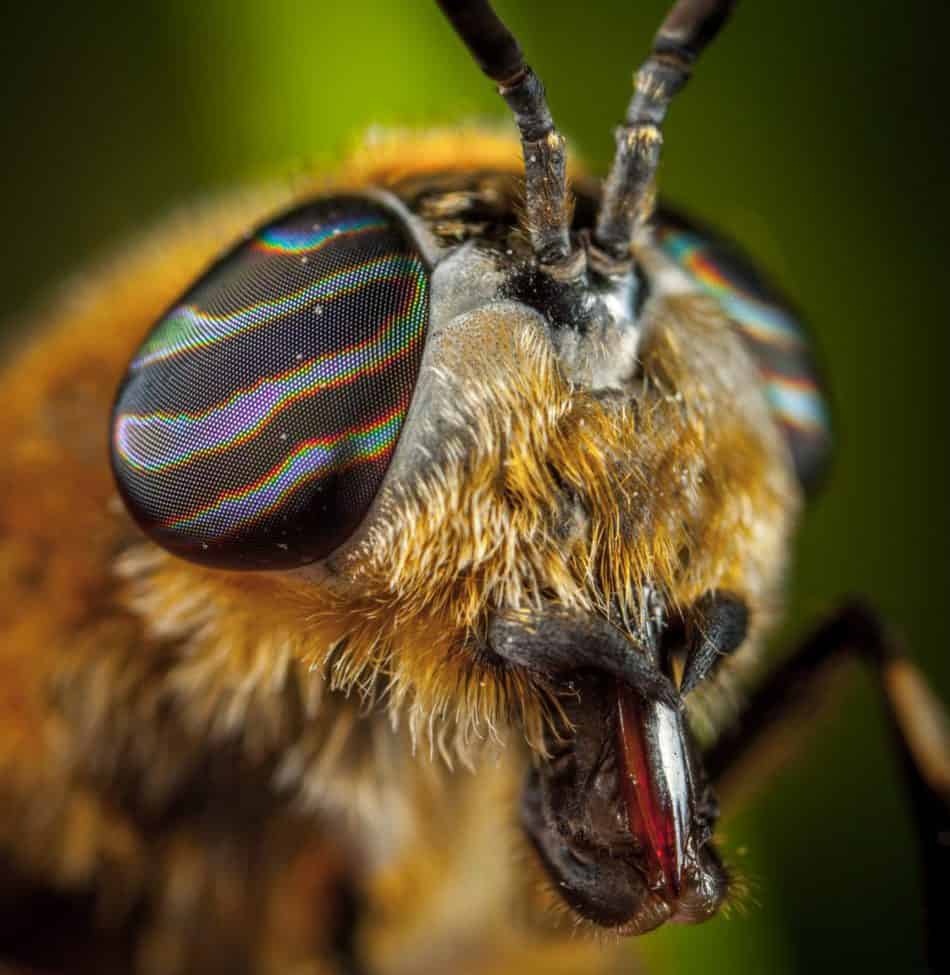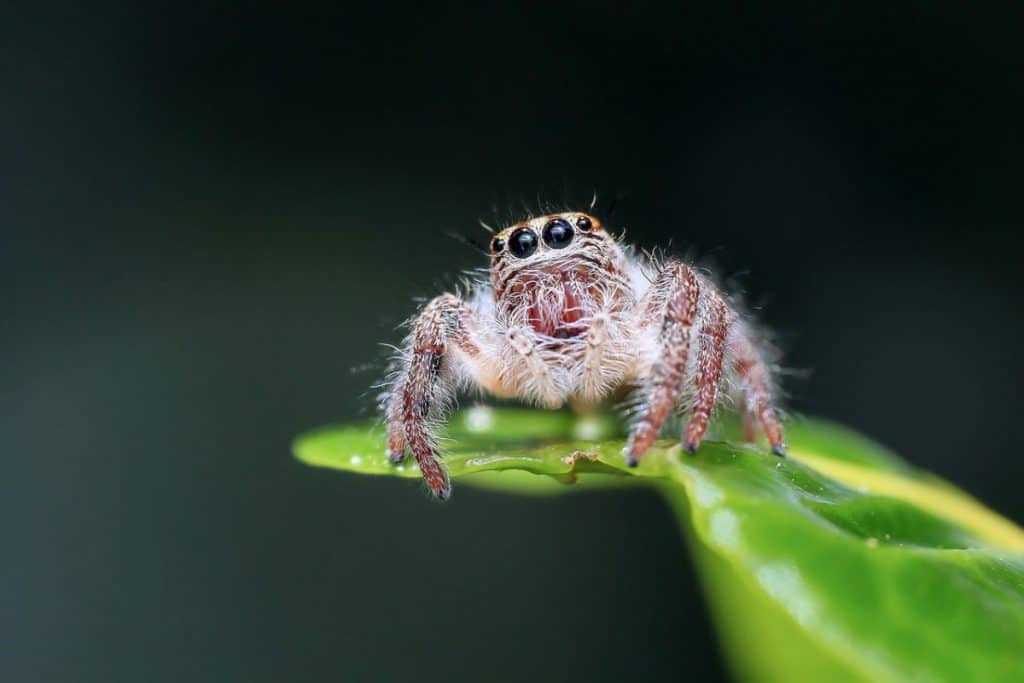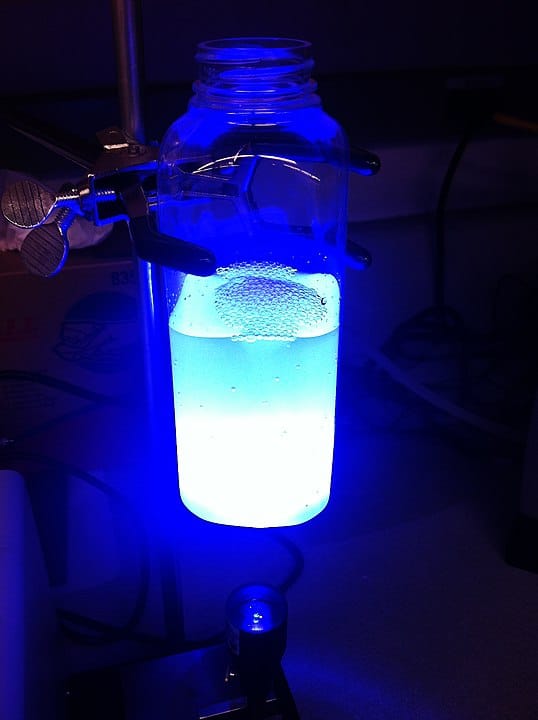
If you enjoy reading this article, why not check out our articles on Longest Living Mantis Species – An Examination and Can Butterflies See Color? Let’s Find Out
While it is common knowledge that dogs have bad eyesight or that cats can see in the dark, what other animals around us can see is a mystery to many of us. Do you know how a bird sees you? Or what a flower looks like to the bee who is eating its pollen? Can insects see color? In this article, we’ll find out just what insects see, how it’s different from our eyesight, and why it makes sense for them to see this way.
How do insects see colors?

All insects can see color, although some see more than others. As an example, a honeybee perceives three different types of color, just like humans. Flies, on the other hand, are only capable of seeing two colors. What’s interesting here is that while some insects perceive as many colors as we do, these colors do not coincide. Even though, as humans, we feel like we can see the entire color spectrum, there are some colors that animals can perceive while we can’t. On the other hand, colors like red are familiar to us, but not to any insect. So how does color vision work in insects? Let’s find out!
How do our eyes perceive color?
First, it’s important to understand how our eyes perceive color. Our eyes perceive light. The information is then transmitted through the optic nerve to the brain, which processes that data into an image.
The colors of light that we perceive depends on something called cones, which are in the eyes of most animals. Cones capture data related to the frequency of the light that enters the eye, which is what determines the color of something. Dogs, for example, have fewer cones in their eyes, which is why they perceive color poorly. Birds, on the other hand, have so many cones in their eyes that they can see a whole spectrum of colors we can’t even begin to imagine. So when scientists wanted to find out how much color insects can perceive, they had to have a look into the cones of their eyes first.
How do we know how insects see color?
Essentially, we can know how animals see color by looking into their eyes and seeing whether they contain cones. The eyes of insects do, which lets us know that they see color. Unfortunately, this method doesn’t tell us much more about what they see. This is because images are not formed in the eye, but in the brain. So while insects certainly do perceive color, their picture of reality remains very different from ours, owing to differences in the way that our brains work.
Want even more details about how insects see color? Check out our article on whether or not butterflies can see color: Can Butterflies See Color?
Do insects see all colors?

Insects do not see all the colors. Some insects can only see two colors, for example, flies only see ultraviolet and green. Bees can perceive ultraviolet, blue and yellow. In any case, insects are not able to perceive the color red. However, it is interesting to note that “ultraviolet” is not a color that humans can perceive. So while insects can’t technically see all colors, neither can we!
Do insects see like us?
Aside from seeing different colors from us, insects perceive reality in a completely different way. Their brains are very emotion-focused, which means that they only perceive things when they are in motion. As a result, insects can’t focus on something that is static. It also makes them great at avoiding predators. Ever wondered why it’s so hard to catch a fly or a mosquito? Insects process motion extremely rapidly. In a way, this means that they see our movements in “slow-motion”, leaving them a lot of time to act.
Have you ever observed how flies seem to have millions of eyes? This is because their eyes are segmented, allowing them to receive more visual data. What it also means is that they have a sort of “mosaic” vision: they see thousands of almost identical images at once, instead of one, unified picture. So insects with compound eyes like flies, mantisflies or bumblebees receive a lot of visual information—which gives them a completely different picture of reality.
How do we know how insects see?
To find out just how insects see, scientists have had to perform a few tests. For example, they noticed that some insects react to visual stimulus containing ultraviolets, while they remain unresponsive to those based on the color red. This lets us know that insects perceive some colors and not others. But when it comes to finding out just what their vision of reality looks like, it is much harder. Because insects are much more different from us than other animals like cats and dogs, it’s impossible to make them do tests that would let us know how they understand the world. So although we can observe how insects behave and make conclusions about the way that they see the world, there is no way to know for sure just what they perceive, and how they perceive it.
Can insects see better or worse than us?
This is a difficult question to answer. In short, the eyesight of insects is adapted to their own needs, meaning that they can see everything they need to see. By our standards, however, they may see less well. For example, insects can’t focus on something, their eyesight is very much dominated by motion. So while they are very good at instantly detecting the movement of another insect, or of your hand trying to swap them, they couldn’t stare at a museum painting for minutes on end as humans do. Furthermore, they can see ultraviolet, which is very useful to them as it helps them to find food. But they can’t see red, which as a color is largely irrelevant to them. So is there eyesight better or worse? One thing is for sure, you would want to have their eyesight, not yours if you were an insect!
Do all insects see the same colors?
No, there are some variations within insects. Bees have some of the best eyesight in the insect kingdom, they can see three colors and a lot of detail. Butterflies also have great color visions, perceiving millions of subtle variations in light frequency. Ants can also see three colors and are capable of seeing in the dark. Flies can only see two colors. Some insects can’t even see ultraviolet, while others perceive more colors than us. In conclusion, insects all perceive color differently than we do, but they also differ widely from one another.
Why do insects perceive color differently?
In evolutionary terms, insects have evolved to see color differently because it allowed them to find food and avoid predator betters. Ultraviolet light is a great example of that. Humans do not perceive that spectrum of color at all, partly because it is irrelevant to our needs.
Insects like bees, on the other hand, have a sharp eye for it because it allows them to find food. Ultraviolet light is present in complex patterns on the surface of flowers, which lets insects know that they are ready to eat. Some say that they use those lights as a kind of “landing strip”, leading them to the foods that they should eat. Similarly, monarch butterflies use ultraviolet light as a guide for determining the trajectory of their migration. Finally, ultraviolet light also allows animals to display signals. It is present on the wings of butterflies, forming beautifully intricate patterns. This also lets predators know to avoid them, which keeps them safe. In short, insects perceive color differently than us because their color vision serves their own needs, which are quite a bit different from ours.
What are ultraviolets?

Ultraviolet is a color, which means that it is a frequency of light, like red, blue or yellow. Ultraviolet light is found at the very end of the color spectrum, just after purple. As humans, there are two sides of the color spectrum that we are unable to perceive: infrareds and ultraviolets. While most insects also can’t see infrared, they can generally perceive ultraviolets, which gives them visual information that we don’t have access to.
All this talk of insects and color may have you wondering if this has anything to do with insects being attracted to light? Let’s find out: Which Bugs are Attracted to Light?
Do humans see all the colors?
No, humans lack the ability to perceive ultraviolet. If we suddenly transformed into insects, we’d be amazed to find out there is now a whole new spectrum of colors we can perceive—pretty fun!
So, can insects see color? Yes, they can, but not in the way that you’d imagine. Different insects can see a different spectrum of colors, but they generally are very different from the ones that humans perceive. As an example, they cannot perceive red, but see ultraviolets which humans can’t see. Not only do insects see color differently, but their whole perception of reality is also completely different from ours. Whether they see in slow-motion or have a mosaic vision, insects get a picture of reality that helps them understand their world, not ours. So let’s put things into a bit of perspective: insects see the world completely differently than we do, but for them, it makes complete sense!
If you enjoyed reading this article, why not check out our articles on How Long do Ants Live? The Complete Answer and What Can Termites Chew Through? Let’s Find Out
Recent Posts
Tiny Black Bugs in Bathroom NO WINGS: What They Are and What to Do!
Finding tiny black bugs in your bathroom can be uncomfortable, to say the least. Especially if they are persistent, or they appear in very large numbers, which they often like to do. When it...
Tiny Black Bugs in Plant Soil - What Are They & What To Do About It
A short horror story: You get a new houseplant. You do your best to take care of it. You’ve ensured that it has the right soil, the right amount of sun, it gets enough water. And then one day, you...

